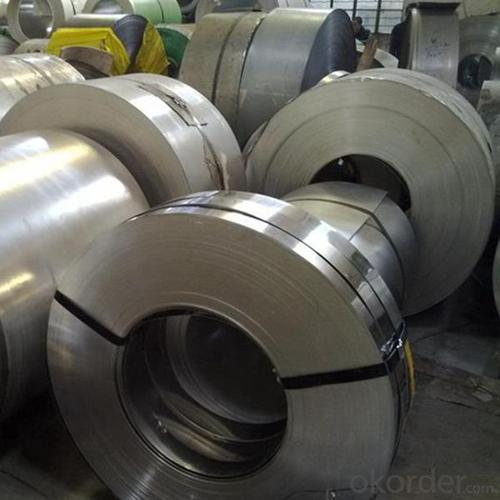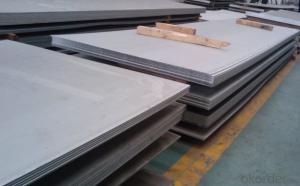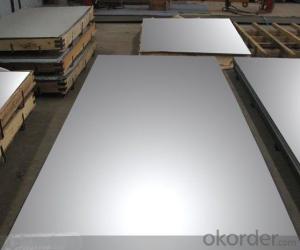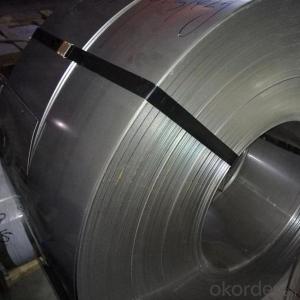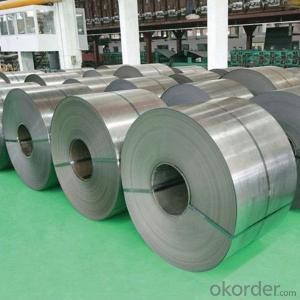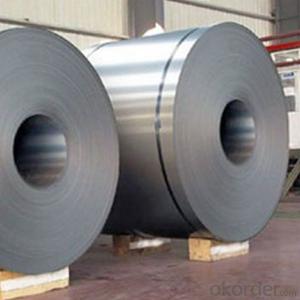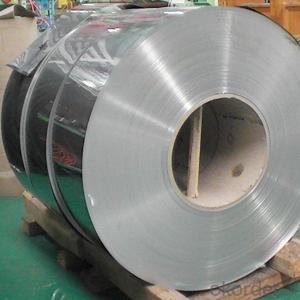Cold Rolled Stainless Steel NO.2B Good Quality Steel Coils Made In China
- Loading Port:
- Tianjin
- Payment Terms:
- TT OR LC
- Min Order Qty:
- 25 m.t.
- Supply Capability:
- 20000 m.t./month
OKorder Service Pledge
OKorder Financial Service
You Might Also Like
Specification
Products Description for Stainless Steel Coils/Sheets:
Prodcut:Stainless Steel Coil
Thinckness: 0.20mm-8.0mm
Width:1000mm, 1219mm(4 feet), 1250mm, 1500mm, 1524mm(5 feet),
1800mm, 2000mm, 2200mm, 2500mm,and customizable
Ni:0.8~1.2% Cu:1.4~1.5% Cr:14
Standard: ASTM, JIS, GB, BS, DIN etc
Grade: 200series&300series&400series
Surface finish: 2B, BA, 8K, 6K, Mirror Finished, No1, No2, No4, Hair Line with PVC
Manufacture technology: cold rolled/hot rolled
Thickness Tolerance: +/-0.1mm
Width Tolerance: +/-10mm
200 Seriers: 201,202
300 Seriers: 301, 304, 304L, 316L, 309, 310S,321
400 Seriers: 410, 410S, 409L,430
Detail picture for Stainless Steel Coils/Sheets
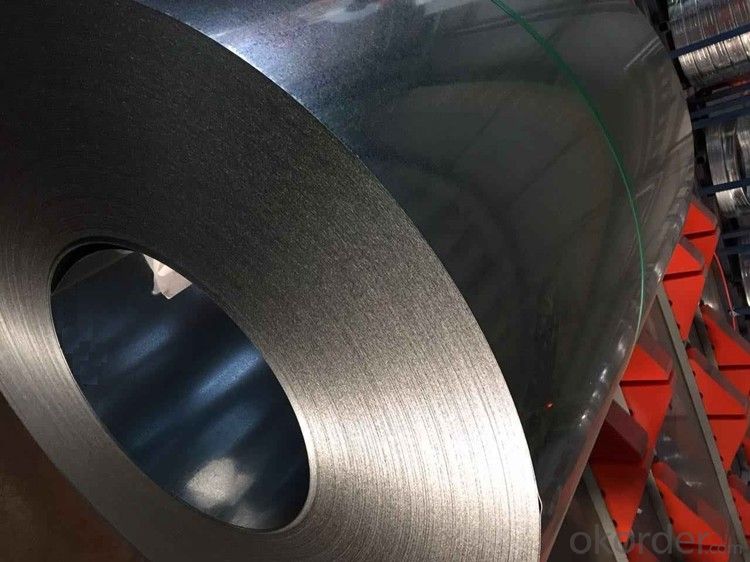
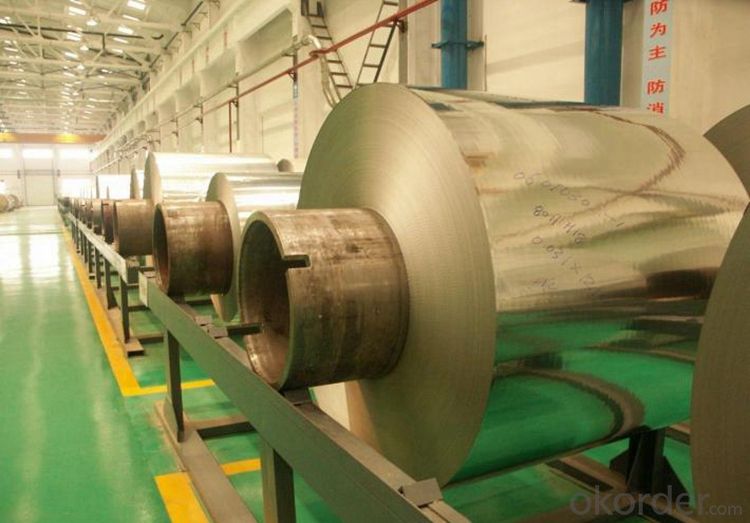

Features of Stainless Steel Coils
(1)Good ductility
(2)Good corrosion resistance
(3)Excellent abrasion resistance and fatigue strength
(4)Good weldability
(5)Oxidation resistant performance
(6)Excellent in high temperature
Specifications for Stainless Steel Coils/Sheets:
Material | Stainless Steel | |
Standard | AISI, ASTM, JIS,GB,EN,DIN | |
Grade | 304 | |
Technology | Cold Rolled and Hot rolled | |
Form | plate | |
Thickness | 0.3 mm – 8.0mm | |
Width | 1000mm,1219mm,1250mm,1500mm,1524mm,2000mm | |
The sizes or thickness of stainless steel coil can be customized, if you need additional information, please don't hesitate to contact us at anytime. | ||
FAQ for Stainless Steel Coils/Sheets:
Q:What are the advantages of your company ?
A: We have many professionals, technical personnel, more competitive prices and best after-dales service than other stainless steel companies.
Q:Can you arrange the shipment ?
A: Sure we can help you with the shipment. We have forwarders who have cooperated with us for many years.
- Q: Can stainless steel sheets be used for electrical conductivity?
- Typically, stainless steel sheets are not employed for electrical conductivity. Stainless steel is renowned for its exceptional resistance to corrosion and durability, rendering it apt for a diverse range of applications like kitchen appliances, construction materials, and industrial equipment. Nevertheless, stainless steel falls short in terms of conductivity compared to metals such as copper or aluminum. Consequently, materials with superior electrical conductivity properties are commonly preferred for electrical purposes.
- Q: 304 why is stainless steel magnetic?
- However, due to segregation or improper heat treatment during smelting, there will be a small amount of martensite or ferrite in Austenitic 304 stainless steel. In this way, 304 stainless steel will have a weak magnetic.
- Q: Can stainless steel sheets be used for elevator mirror panels?
- Stainless steel sheets are suitable for elevator mirror panels. Elevator design and construction frequently utilize stainless steel due to its durability and corrosion resistance. Moreover, stainless steel's high reflectivity makes it an excellent option for mirror panels. Elevator mirror panels made of stainless steel not only enhance the elevators' appearance with a sleek and modern aesthetic but also offer exceptional durability and low maintenance requirements. Furthermore, stainless steel can endure the constant use and abuse, ensuring that elevator mirror panels made from this material are reliable and long-lasting.
- Q: What specifications do stainless steel plates have?
- This is not specified. Do you want to make 201 or 304?. You can measure the size of the bag you want. Double fold (usually 10MM), such as length, width, and thickness of the package. Go and ask someone to do it for you. If fitted, use a glass or spot weld.
- Q: Are stainless steel sheets suitable for architectural column covers or cladding?
- Yes, stainless steel sheets are suitable for architectural column covers or cladding. Stainless steel is known for its durability, corrosion resistance, and aesthetic appeal, making it an excellent choice for exterior applications. It can withstand harsh weather conditions, maintain its appearance over time, and provide a sleek and modern look to architectural structures. Additionally, stainless steel sheets offer versatility in terms of finishes, patterns, and colors, allowing architects and designers to create unique and visually appealing column covers or cladding designs.
- Q: Are stainless steel sheets suitable for marine environments?
- Indeed, stainless steel sheets prove to be appropriate for marine environments. The remarkable resistance of stainless steel to corrosion and rust is attributed to the inclusion of chromium in its composition. Consequently, this renders it an exceptional material for utilization in marine environments, where consistent exposure to saltwater and moisture notoriously accelerates the corrosion of alternative metals. Moreover, stainless steel sheets possess commendable mechanical properties, high strength, and exceptional durability, further establishing their suitability for marine applications. Additionally, stainless steel exhibits ease of cleaning and maintenance, guaranteeing prolonged longevity and unwavering performance amidst harsh marine conditions.
- Q: Can stainless steel sheets be used for storage tanks?
- Yes, stainless steel sheets can be used for storage tanks. Stainless steel is a durable and corrosion-resistant material, making it suitable for storing various substances, including liquids and gases, in industrial and commercial applications.
- Q: What are the different types of embossed finishes available for stainless steel sheets?
- There are several types of embossed finishes available for stainless steel sheets, including diamond, quilted, linen, and leather grain patterns. Each finish offers a unique texture and aesthetic appeal, allowing for various design options in different applications.
- Q: Can stainless steel sheets be used for jewelry making?
- Yes, stainless steel sheets can be used for jewelry making. Stainless steel is a durable and hypoallergenic material that is often used in the production of jewelry. It offers a sleek and modern look and can be easily shaped and manipulated into various designs and forms for making earrings, necklaces, bracelets, and other jewelry pieces.
- Q: Are stainless steel sheets suitable for cryogenic storage containers?
- Yes, stainless steel sheets are suitable for cryogenic storage containers. Stainless steel is known for its excellent low-temperature properties, making it an ideal choice for cryogenic applications. It has a high resistance to thermal expansion and contraction, making it less prone to cracking or leaking at extremely low temperatures. Additionally, stainless steel is highly durable, corrosion-resistant, and can withstand the extreme conditions of cryogenic storage, ensuring the safety and integrity of the stored materials. Therefore, stainless steel sheets are widely used in the construction of cryogenic storage containers in various industries such as pharmaceuticals, aerospace, and scientific research.
Send your message to us
Cold Rolled Stainless Steel NO.2B Good Quality Steel Coils Made In China
- Loading Port:
- Tianjin
- Payment Terms:
- TT OR LC
- Min Order Qty:
- 25 m.t.
- Supply Capability:
- 20000 m.t./month
OKorder Service Pledge
OKorder Financial Service
Similar products
Hot products
Hot Searches
Related keywords






